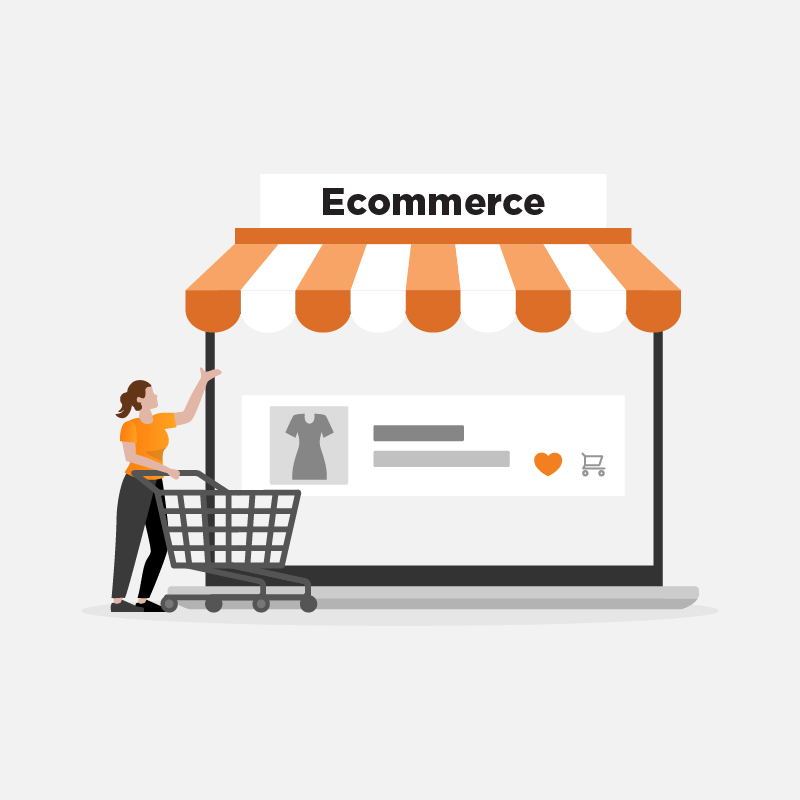DTC’s impact on ecommerce logistics
The way we shop for anything and everything continues to change.
From always local to shopping online to a blended approach, the only constant is change, as the old phrase goes. If it’s true for customers, it must be true for supply chains.
Change is happening at a faster rate
While the pandemic is often cited as “the event,” it was just an accelerant. We’ve been experiencing the rise of direct-to-consumer (DTC) buying habits since smartphones drove a change in how we research, how we ‘window shop’, and how we ultimately award business.
The ecommerce explosion granted consumers sudden access to enhanced buying information; consumers adjusted to that. Similarly, supply chains must adjust to how this change has suddenly impacted ecommerce logistics. The result? Sudden focus on and investment in DTC.
👉Grab the newest DTC Market report and replay our on-demand webinar to get expert analysis!
Ecommerce is prime for DTC
Our recent survey of senior supply chain decision-makers found that DTC isn’t just a channel; it’s a quickly growing opportunity that requires a targeted fulfillment strategy. The biggest expected rise in DTC is happening in the ecommerce sector.
Today, 44% of respondents say that more than half of their overall sales come from DTC channels, but 58% think this will be the case within 3 years.
But you can’t capture this shift with a dated strategy. Widespread access to deal-making or deal-breaking information, such as pricing and availability, means it’s simpler than ever to abandon a cart. Plenty of competitors are ready to pounce on that demand.
Innovate, but do it FAST
High-growth brands like Dermalogica UK, a Unilever brand, have found a modern ecommerce order fulfillment software to be crucial in unlocking fast value and differentiation in this new space:
“Dermalogica went live on the Deposco platform in just 90 days,” said Jason Brown, Director of Logistics, Unilever, Dermalogica. “The ability to get innovation in place quickly to meet the evolving needs of our customers has allowed us to reduce risk, lean into growth, and see value faster. This rapid time to value benefits us by enabling us to serve all of our customers, including our franchise businesses, the retailers we work with, and the individual consumers who buy from us directly, quickly, and efficiently every time.”
3 must-have elements for strategic success
Three key elements need to be addressed if you want to be successful with a consumer-direct fulfillment model. And at the pace of change, you’ll want to tackle them immediately.
#1: Know ‘The Zero Consumer’
In the past, a new customer was a golden opportunity.
You rolled out the red carpet. You poured on the effort and ensured success. You knew that the next sale would follow if you got the first sale right. Each successive sale required less effort and less expense. Established rapport and demonstrated competence, ensured repeat business.
That’s over.
McKinsey has recently coined the term “Zero Consumers”.
Their definition of a Zero Consumer: “A consumer who shops across different channels expects excellent service (including fast shipping) and sustainable products… (Zero Consumers) have no physical or digital boundaries and are focused on value.”
As an ecommerce logistics leader, the important add is “… and they will quickly shift their business around if they feel they can get a better product, better service, better social impact or move away from a failure to deliver”.
Loyalty is out the window
Your prior performance is no longer an indicator of future success.
Treat every order like it’s the first – or the last – you will have with that customer. Excellence in execution every time. Make your performance predictable to ensure that ‘value’ is always delivered.
Rather than expect to capture DTC business and depend on its repeated granting, a shift must be made to demographics and what groups consider ‘value’ to be.
- Are you going to capture ‘green’ business?
- Are you going to capture ‘fast’ business?
- Are you going after ‘novelty’ business?
Be reliable and predictable
You can’t please everyone, but you can carve out a space you reliably serve. The key will be understanding those customers and their preferences, which vary greatly in a DTC ecommerce logistics model.
While you identify that group, deploy execution solutions for the reliable part. Don’t worry about how they get their orders, and don’t sweat whether your warehouse can keep up. While the customer experience should be fluid and reactive, the delivery should be clockwork.
Dynamic customer expectations and predictable supply chain responses.
#2: You can’t sell what you can’t find or track
Inventory management has always been a key factor in a successful supply chain. Even before modern systems, accurate accounting and inventory location were essential to filling orders and keeping customers happy.
However, inventory transparency is an evolution of that concept. Now, it’s time to rewrite your game plan for DTC inventory management. You are no longer thinking about just your owned inventory under your direct control. You are considering several inventory pools:
- On Order with an ETA (Available-to-Promise)
- Directly owned in your warehouse
- Directly owned in someone else’s warehouse (3PL)
- Available to sell (trading networks, drop-ship)
All inventory as available, end of story
Modern ecommerce order fulfillment needs to consider several ways that an order can be filled. From an information perspective, you need to see all these options and their quantities in a single location – not across disparate, disconnected views.
On the ecommerce side, this should simply be presented as “available” to the customer. Maybe there’s clarification for shipping or pick-up in-store options, but they just need to know you can get it for them.
On the DTC ecommerce side, how it’s fulfilled must be optimized for all orders coming in, replenishment rate, total cost to serve, SLAs, and any other contractual complexities that might arise. And, it needs to happen in near real-time.
Direct-to-consumer order management
Huge logistical challenges and inflated costs lie ahead for ecommerce businesses that try to retrofit old fulfillment technologies that can’t put together all the complexities of DTC. Advanced order management systems that introduce next-level accuracy and inventory control are table stakes to capitalizing on DTC ecommerce opportunities without huge fiscal implications, including:
- Poor warehouse productivity and higher labor costs
- Slow, missing, and incorrect data that kills the customer experience (along with sales and the bottom line)
- Integration problems with existing infrastructures, including brick-and-mortar retail operations
- Barriers to rolling out new offerings quickly – particularly as products, channels, and unique services are needed
Learn more: How to break into Direct-to-Consumer (DTC) and make a success of it
What gets measured gets managed, and accurate inventory gets sold.
#3: Not built; composed-for-purpose supply chains
Emerging brands do not have the budgets or time to deploy massive enterprise suites. When you buy one-size-fits-all OMS software, every department gets the market average. Good enough, but not great. Not fit-for-purpose. OK.
Economic factors continue to frustrate ecommerce supply chains:
- Limited access to resources from labor to transportation
- Inflation hurts costs, hurts prices, dissuades customers
- Changing markets expose new bottlenecks and limitations
And there’s no silver bullet for any of it, just a steady need for target incremental improvement.
You choose who to invite
Nimble businesses have accepted that they’ll have more vendors doing smaller jobs, but those individual solutions are focused on solving specific needs and not losing that focus. As an ecommerce logistics leader facing new DTC challenges, your job is now to assemble a suite of vendors rather than a big agreement with a single vendor.
This new complex coordination approach frees you up to solve specific problems instead of thinking about a myriad of interconnected, single-vendor solutions. You can invite new carriers, add order execution options, upgrade your TMS, and know that your tech stack isn’t a tightly integrated house of cards waiting for a breeze.
- Add automation and robotics to streamline repeatable tasks
- Add marketplaces, third-party trade networks, and other sales channels to capture more DTC business
- Add rate shopping, shipping networks, and intermodal support to lean out costs and accelerate delivery
And do it without fretting about ripping out your whole supply chain. “Rip and replace” is rightfully disparaged in modern solutions. Improve, enhance, augment, and compose have become the way agile DTC ecommerce businesses are thriving.
Master DTC ecommerce fulfillment
You probably don’t buy just good enough. Your customers aren’t looking for good enough. Give them great. The number of brands with a substantial DTC channel will double. That trajectory isn’t slowing. A new DTC ecommerce fulfillment model will address the dynamic needs and preferences of your customers.
How do you serve savvy ‘zero consumers’ who are focused on single transactions over brand commitment?
- Make your products easy to buy
- Offer true omnichannel options – direct vs. pickup, expedite vs. delay
- Be transparent and predictable
Do your current systems allow you to be flexible in response and predictable in execution? How can order management software improve this?

